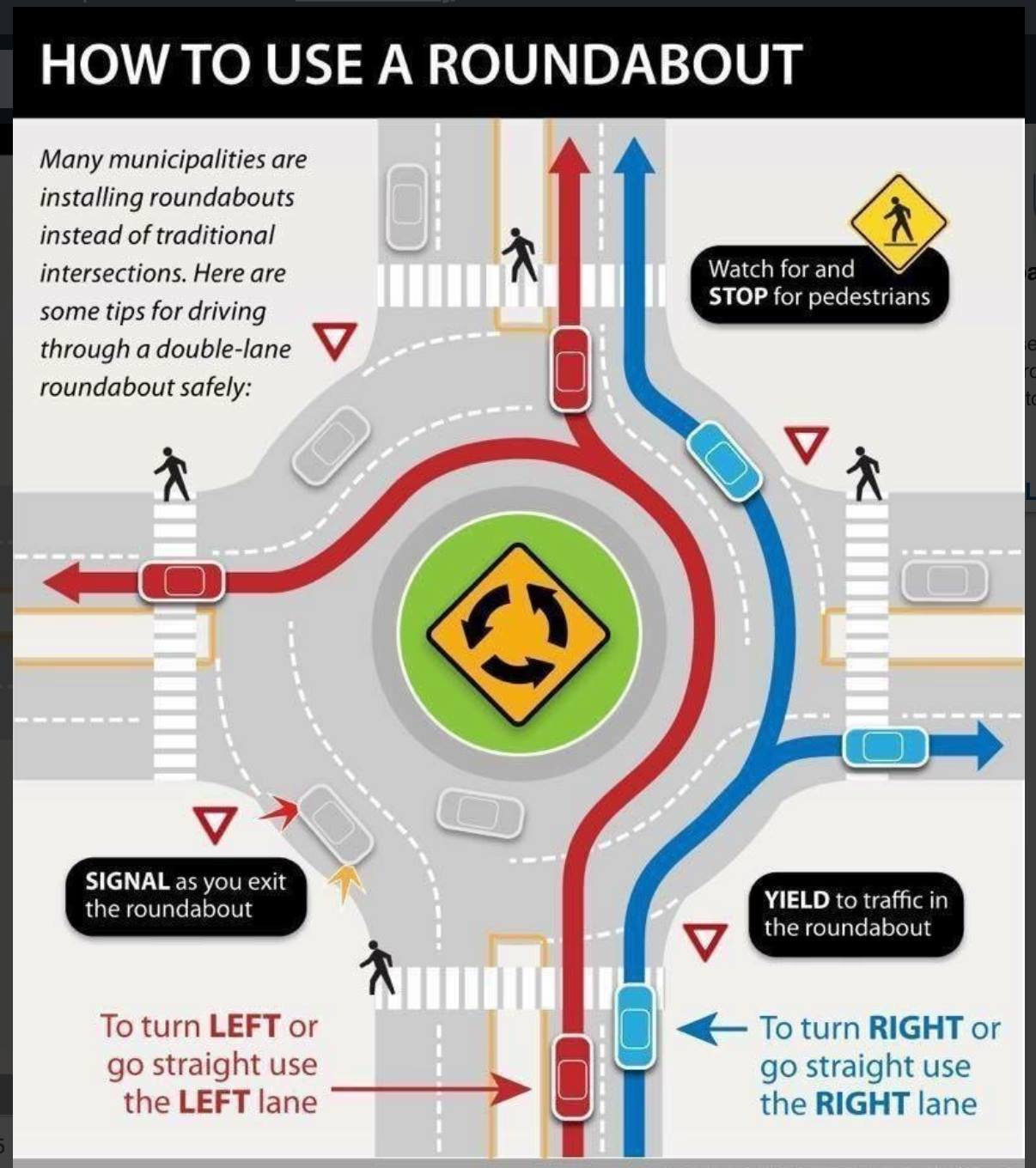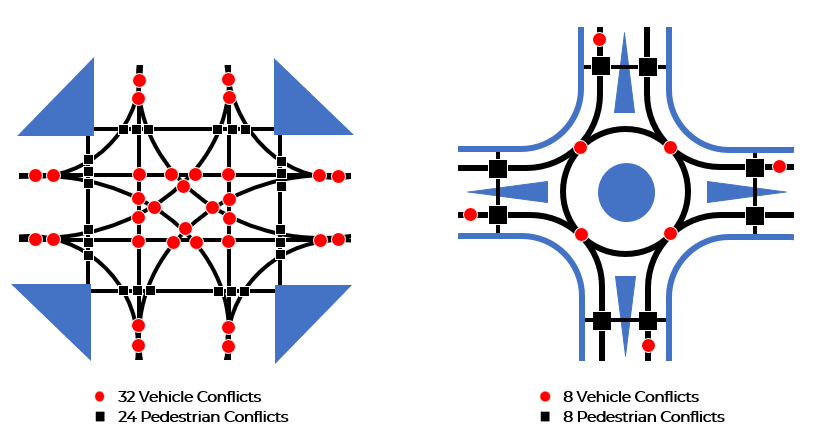August 13, 2020
Roundabouts encourage speed reduction and consistency of speed among vehicles. Effective roundabout designs require all vehicles to slow down to negotiate the roundabout through a series of turning maneuvers at lower speeds, generally less than 30 km/h (20 mph).
The minor delay or inconvenience of reduced speeds is a trade-off for increased safety of vehicles and pedestrians. Roundabouts reduce vehicle-to-vehicle crossing conflicts (where the paths that vehicles travel would cross) by converting all movements to right turns. Most severe crashes at conventional signalized intersections occur when there is a violation of a traffic control device (e.g. signals, stop signs, yield signs). Roundabouts reduction of conflicts through physical features is more effective in maintaining safe movement of vehicles and people through an intersection than the reliance on driver obedience to traffic control devices.
- Slow down. Obey traffic signs.
- Yield to pedestrians and bicyclists.
- Yield to traffic in the roundabout coming from the left.
- Enter the roundabout when there is a safe gap in traffic.
- Keep your speed low within the roundabout.
- As you approach your exit, turn on your right turn signal.

There are three main reasons why roundabouts are being built instead of a stop-sign intersection:
- Less Conflict. Roundabouts have fewer conflict points. A single-lane roundabout has 66% fewer pedestrian-vehicle conflict points and 75% fewer vehicle-vehicle conflict points than a stop or signal-controlled intersection. Conflicts between bicycles and vehicles are reduced as well. With roundabouts, head-on and high-speed right-angle collisions are virtually eliminated.

- Lower Speed. Traffic speed at any road or intersection is vitally important to the safety of everyone, and especially non-motorized users. Lower speed is associated with better yielding rates, reduced vehicle stopping distance, and lower risk of collision injury or fatality. Also, the speed of traffic through a roundabout is more consistent with comfortable bicycle riding speed.
- Safer Crossings. Pedestrians cross a shorter distance of only one direction of traffic at a time since the entering and exiting flows are separated. Drivers focus on pedestrians apart from entering, circulating, and exiting maneuvers.
For a more detailed discussion on roundabouts, review the City’s Roundabout Fact Sheet.
